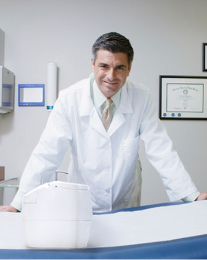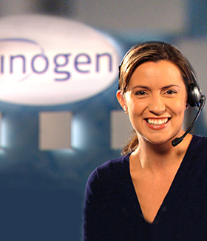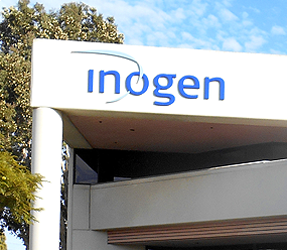What Is Oxygen Therapy or O2 Therapy?
Oxygen therapy, sometimes referred to as O2 therapy, is a type of medical intervention that provides supplemental oxygen to people who are suffering from sudden or long-term health conditions. While oxygen is one of the most abundant gases in the universe and is essential to keeping our cells and bodies healthy, a variety of health issues can cause a person to become oxygen deprived. If that occurs, oxygen treatment can help improve a person’s oxygen intake. So, what is O2 and what is oxygen therapy? Read on to find out more.
What Is O2?
If you are wondering, “What is O2, exactly?”, the answer is quite simple. Oxygen is also known as O2, which is the chemical abbreviation for the oxygen molecule. It is a colorless, odorless gas and is one of the most reactive non-metallic elements on the periodic table. Oxygen is the third most abundant element in the universe and life on our planet is heavily dependent on it. The air we breathe contains approximately 21% oxygen.[1]
So, if oxygen is so readily available, why is oxygen therapy necessary? What is O2 therapy used for if our air already contains adequate amounts of O2 to sustain life and allow us to breathe? Although this amount of oxygen might be sufficient for people with healthy, properly functioning lungs and airways, it may not be enough for people with chronic lung conditions like COPD whose lungs do not process air as effectively. For people who are unable to inhale adequate amounts of air, or for people whose lungs are unable to process that air properly and get the necessary amounts of oxygen from it, oxygen therapy, or O2 therapy, becomes a necessity.
What Is Oxygen Therapy?
So, what is O2 therapy? When you ask, “What is oxygen therapy?” there are generally two parts to that question. You may actually be wondering, “What is oxygen administration and how is an oxygen treatment delivered?” Oxygen therapy can be delivered via compressed oxygen gas, liquid oxygen, oxygen concentrators or hyperbaric oxygen therapy[2], depending on the needs of the patient. However the oxygen treatment is delivered, the goal is to improve the absorption of oxygen into the bloodstream and body. If you are wondering what an oxygen treatment is, it is simply providing supplemental oxygen to the patient via one of the delivery methods just described to help improve oxygen absorption and improve a patient’s blood oxygen levels.
Who Needs Oxygen Therapy?
What is oxygen therapy used for and what is oxygen administration like? The answer to these questions can vary from patient to patient. Oxygen therapy may be prescribed for any number of reasons. People with COPD, lung disease, pneumonia, asthma, heart failure, sleep apnea, cystic fibrosis, other chronic lung conditions or respiratory trauma may need oxygen therapy to help their lungs better absorb the oxygen their bodies need. It may be needed for a short period of time to improve a temporary drop in oxygen levels, or for a long period of time to treat ongoing symptoms of low oxygen or breathlessness. Oxygen therapy can be administered at home or you can receive oxygen treatment under medical care, depending on the kind of oxygen treatment needed and the intended outcome of your O2 therapy.[1,2]
Many people believe that shortness of breath is the qualifying factor for supplemental oxygen, but additional criteria must be met before a doctor can prescribe oxygen treatment to their patients. In addition to shortness of breath, doctors will ask about a number of different symptoms, including rapid breathing, heart rate, wheezing, coughing, sweating, confusion and changes in mood, behavior or skin color. If you are experiencing more than one of these symptoms, you may not be getting enough oxygen and you may qualify for oxygen therapy.[2]
Before being selected for oxygen therapy, your doctor will order an arterial blood gas (ABG) study or conduct a pulse oximetry test to measure the amount of oxygen in your blood. Generally speaking, medical oxygen is required if your blood oxygen level is less than or equal to 60mg Hg[1] or your oxygen saturation level is 88% or lower.[3] If your doctor determines that your blood oxygen levels are low, they may recommend that you begin O2 therapy. Be aware, however, that people with chronic lung disease like COPD may live with lower oxygen saturation numbers in general. This is why a doctor must do a thorough examination to find out whether oxygen therapy benefits you.
How Many Hours a Day Must You Use Oxygen Therapy?
The amount of time you use O2 therapy will be based on your individual needs and unique symptoms, and your oxygen therapy prescription will be determined by your doctor based on that information. While some people only need oxygen treatment while participating in certain activities, like exercising or sleeping, other people need it more regularly. The good news is that using oxygen therapy for more than 15 hours a day increases survival in some patients.[4] In fact, there are a number of oxygen therapy benefits, in addition to increasing life expectancy, that you could experience with supplemental oxygen in both the short and long term. Depending on the type of oxygen therapy delivery system you use, you may still be able to lead your regular, active life, even while receiving oxygen treatment. To learn more about the many ways supplemental oxygen can benefit you, read Portable Oxygen Benefits.
Are There Any Side Effects Associated with Supplemental Oxygen Treatment?
When used correctly, O2 therapy is both safe and effective. Like any prescription drug, however, side effects may occur. The following includes the most commonly reported side effects associated with supplemental oxygen and oxygen therapy equipment:
- Nasal dryness – Supplemental oxygen can have a drying effect on your entire respiratory tract, starting with your nose and nasal passages. Using a moisturizing product such as AYR Saline Nasal Mist can help lubricate your nasal passages, making the therapy more comfortable.[1]
- Skin irritation – Given that the prongs of the nasal cannula rest just inside the nares, it is not uncommon for the skin in that area to become red and irritated. Applying AYR Nasal Gel in and around the nasal openings may help soothe this highly sensitive area, providing protection against skin breakdown.[1]
- Risk of fire – Although oxygen is not flammable in and of itself, it supports combustion, meaning that things burn more readily in its presence. Never smoke or allow anyone to smoke while using supplemental oxygen. Avoid using your oxygen near an open flame or other sources of heat such as an electric stove. Steer clear of personal care products that contain petroleum.[1]
- Suppression of the drive to breathe – The National Heart Lung and Blood Institute reports that this type of therapy may suppress the drive to breathe in a select group of patients. This can generally be managed by adjusting your oxygen flow rate.[7] That said, it is important that you always follow your doctor’s orders regarding your oxygen prescription. Never increase your oxygen dose without first checking with your health care provider.
Oxygen Therapy Benefits
Although there could be some side effects associated with O2 therapy, as with any medical treatment, there are also a number of oxygen therapy benefits. In fact, when it comes to people living with chronic lung conditions like COPD, oxygen therapy benefits can be life-changing. If you have lung disease or another chronic lung condition, your doctor may prescribe oxygen treatment to help you breathe better. In addition, oxygen therapy can help you live longer, experience fewer complications, reduce your symptoms, increase your exercise stamina, make air travel easier and generally improve your quality of life.[1] If you are struggling to breathe easily and experiencing symptoms from low oxygen levels, oxygen therapy can make a difference in how you feel day to day.
How Inogen Can Help with Your Oxygen Therapy
Oxygen therapy, when used as prescribed, can give you the energy you need to function better and be more physically active. Many people think that oxygen treatment means remaining tethered to a home oxygen machine or hauling around heavy oxygen canisters. Thankfully, with innovations in O2 therapy delivery systems, this doesn’t have to be your experience with supplemental oxygen. With portable oxygen concentrators from Inogen, it can be easy for you to maintain your freedom, mobility, and independence while using supplemental oxygen. Inogen was founded on the belief that supplemental oxygen treatment should not hold you back from living your life, so Inogen One portable oxygen concentrators were developed to help you get the oxygen treatment you need anytime, anywhere, when powered by an AC or battery source. The Inogen One Systems are designed to allow you to continue living an active, healthy life at home or on the go, all while receiving your oxygen therapy. With Inogen portable oxygen concentrators, you can keep up with your daily routine around the house, without being stuck in one spot, or you can travel about town as you see fit, without having to pull heavy and cumbersome oxygen tanks behind you.
Even better, you never have to worry about running out of oxygen, as Inogen portable oxygen concentrators are designed to produce oxygen continuously by pulling and purifying air directly from the atmosphere, no refills required. As long as you have power via your rechargeable battery or an AC or DC power source, you have an infinite supply of oxygen for as long as you need it, wherever you go. Additionally, our oxygen concentrators make less noise than the average quiet library.
Portable, compact and quiet, your Inogen One portable oxygen concentrator will not get in the way of your life. You can maintain an active social life and continue to enjoy activities in and out of your home, all while receiving your oxygen therapy benefits. If you need oxygen therapy, contact us to find out how oxygen treatment with Inogen oxygen concentrators may improve your quality of life. Talk to your doctor about how Inogen can help you with your O2 therapy today.
Frequently Asked Questions
What is oxygen therapy and what is the purpose of oxygen treatments?
Oxygen therapy, or O2 therapy, is a medical therapy wherein supplemental oxygen is given to anyone suffering from oxygen deficiency. The purpose of oxygen treatment is to help patients breathe better and improve their blood oxygen levels. For people experiencing shortness of breath and other signs and symptoms of low oxygen, there are numerous oxygen therapy benefits, including improved life expectancy, improved exercise tolerance, improved quality of life and more.
What are the signs that a person needs oxygen treatment?
Shortness of breath is often the first sign that someone will require oxygen therapy. However, it can also be a sign of other problems, so it is helpful to be familiar with other signs of low blood oxygen levels. If you or someone you love is experiencing any of these symptoms, especially in conjunction with shortness of breath, seek medical help:[5]
- Chest pain
- Confusion
- Dizziness
- Headache
- High blood pressure
- Lack of coordination
- Rapid breathing
- Rapid heartbeat
- Sense of euphoria
- Visual changes
How is oxygen administered to the patient?
Many people wonder, “What is oxygen administration and how is it delivered?” Oxygen administration is simply another term for supplemental oxygen, and those oxygen treatments can be delivered via four different methods.[2]
- Compressed oxygen tanks: This is what most people picture when they think of supplemental oxygen. Oxygen therapy supplied via compressed oxygen is often the least expensive in the short run; however, the tanks are heavy and awkward to carry, and they require regular refills or replacement.
- Liquid oxygen: Liquid oxygen is oxygen that has been cooled to such a low temperature that it becomes liquid. As a liquid, it takes up less space, which makes it easier to keep more oxygen on hand in a lighter tank than compressed oxygen. The tanks are still quite large and require regular refills and maintenance since liquid oxygen evaporates. Liquid oxygen is also more expensive than compressed oxygen.
- Hyperbaric oxygen therapy: Hyperbaric O2 therapy involves breathing 100% oxygen inside a special chamber with higher atmospheric pressure. The increased air pressure allows the lungs to take in more oxygen than normal, improving the rate of oxygenation. It is commonly used for decompression sickness (which can occur when scuba diving), as well as for other severe infections, slow-healing wounds or in cases of air bubbles in the blood vessels.
- Oxygen concentrators: Oxygen concentrators are markedly different from other oxygen therapy delivery systems in that they pull in the surrounding air, compressing and purifying it, to provide oxygen-rich air to patients. Because oxygen concentrators use the surrounding air, they can provide an endless supply of oxygen as long as they have power. This means that patients do not have to worry about managing refills or using up their supplemental oxygen supply. Moreover, portable oxygen concentrators are small and lightweight, allowing patients to travel easily with their oxygen treatment so that they can continue to participate in their daily activities without having to worry about managing awkward tanks.
How long can a patient be on oxygen therapy?
Under the careful observation of a doctor, a patient can remain on oxygen therapy as long as necessary. Some patients only need oxygen treatment for a very short time to improve a temporary hypoxemic condition, like patients with asthma. Patients with chronic lung diseases like COPD, however, may need to remain on oxygen therapy for the remainder of their lives. How long each individual patient will require oxygen therapy depends on their condition, their overall health and their ability to participate in other therapeutic measures. Patients who are able to do pulmonary rehabilitation, for example, may be able to reduce the amount of oxygen therapy they need or the frequency with which they need it[6]. Each patient’s health care team will perform a number of tests and take careful stock of your medical history and background to determine how long they will require O2 therapy.
REFERENCES
- https://www.verywellhealth.com/the-benefits-of-oxygen-therapy-914838
- https://www.healthline.com/health/oxygen-therapy
- Blood Oxygen Levels: What Is a Normal Level? (healthline.com)
- https://pubmed.ncbi.nlm.nih.gov/20499792/.
- https://www.medicalnewstoday.com/articles/321044.php
- http://www.rtmagazine.com/2015/10/oxygen-administration-best-choice/
Additional Sources
Symptoms and Diagnosis of COPD | Everyday Health
https://www.nhlbi.nih.gov/health-topics/oxygen-therapy
https://www.livescience.com/28738-oxygen.html
https://www.inogen.com/resources/oxygen-therapy-treatment/what-is-hyperbaric-oxygen-therapy/













